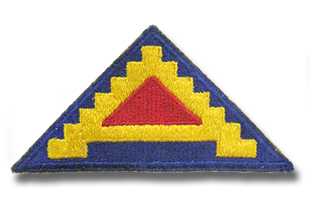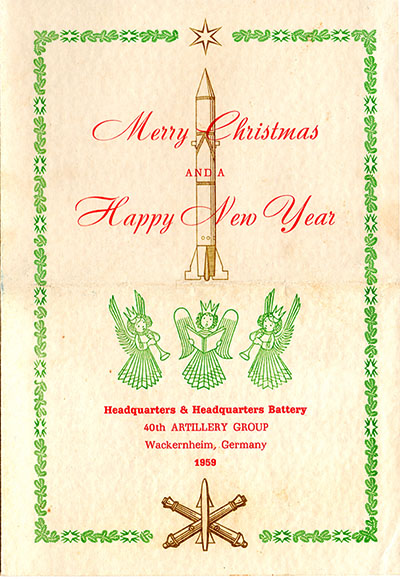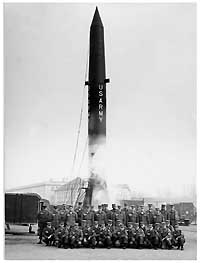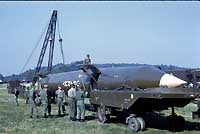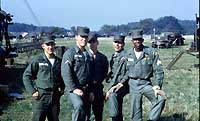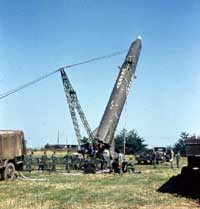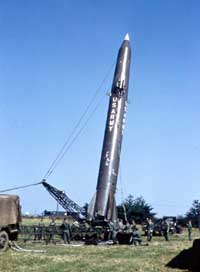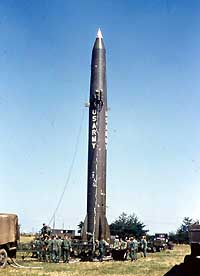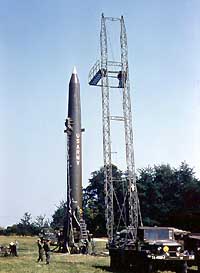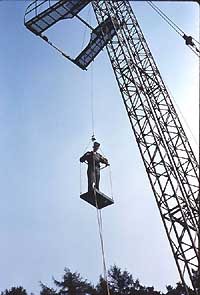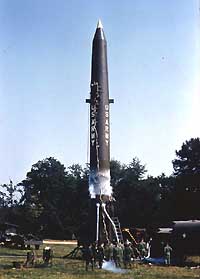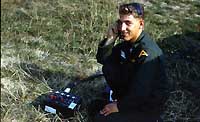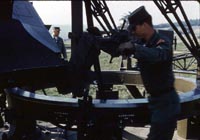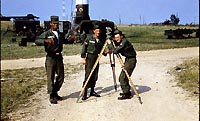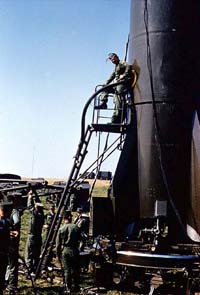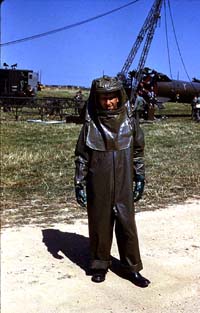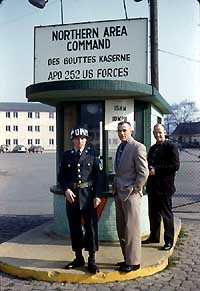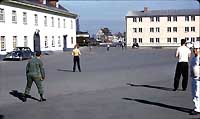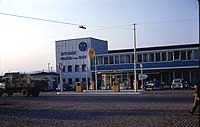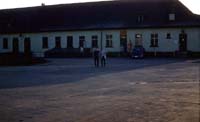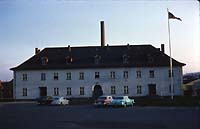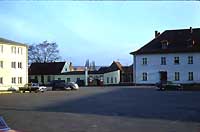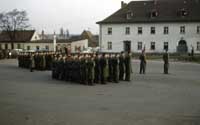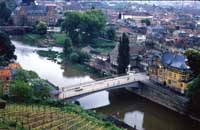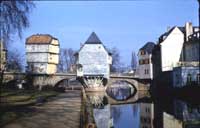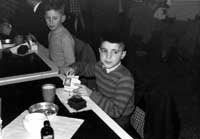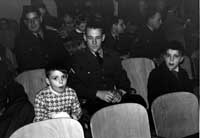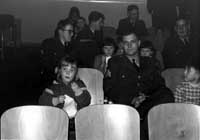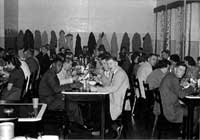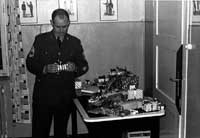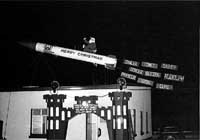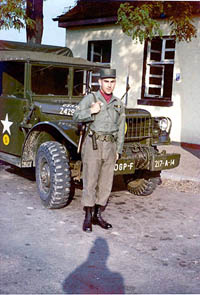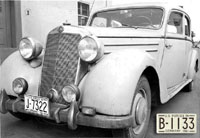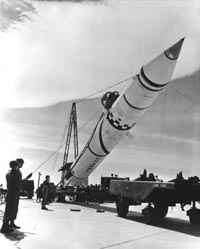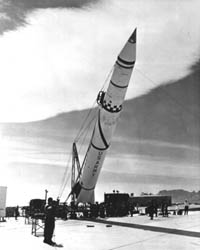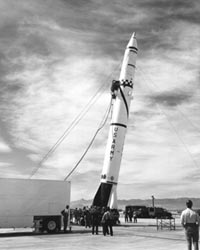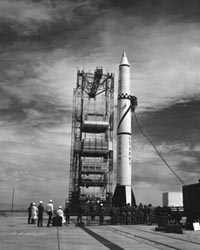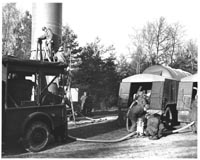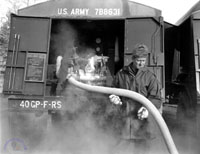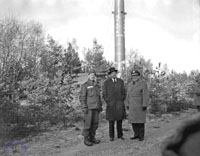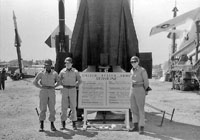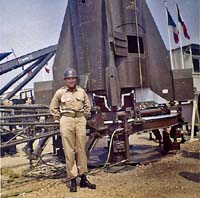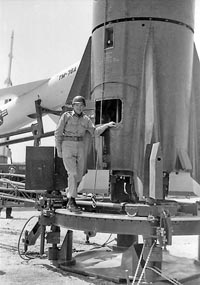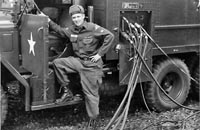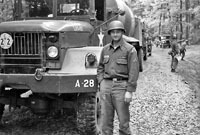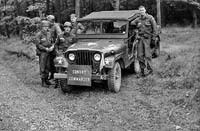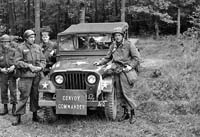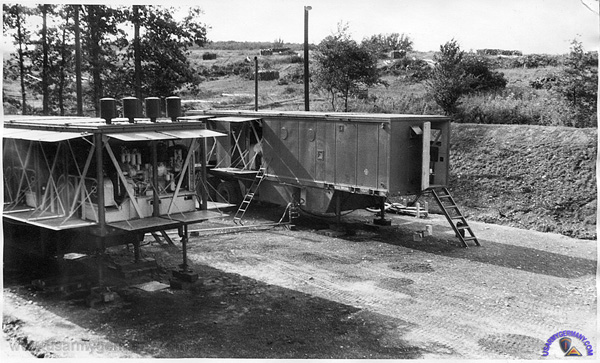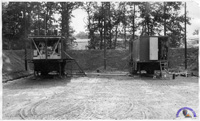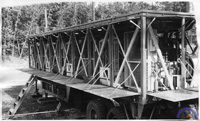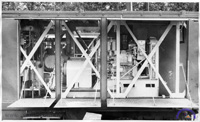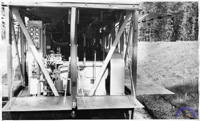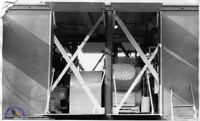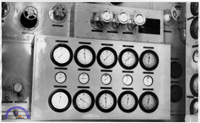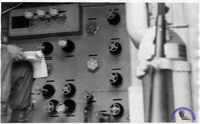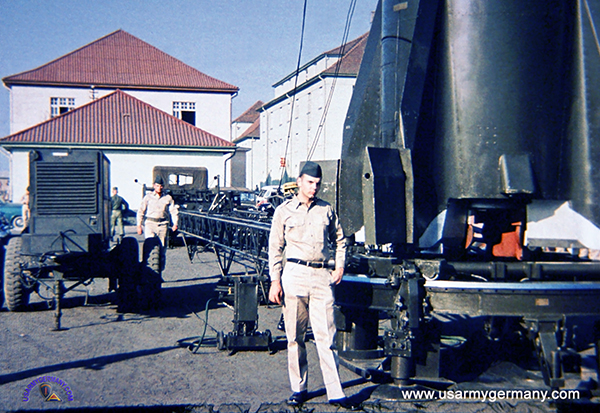| If you do
NOT see the Table of Contents frame to the left of this page, then Click here to open 'USArmyGermany' frameset |
|||||||||||||||||||||||||||||||||||||||||||||||||||||||||||||||||||||||
40th Field Artillery Group |
|||||||||||||||||||||||||||||||||||||||||||||||||||||||||||||||||||||||
|
|
|||||||||||||||||||||||||||||||||||||||||||||||||||||||||||||||||||||||
|
|||||||||||||||||||||||||||||||||||||||||||||||||||||||||||||||||||||||
|
|
|||||||||||||||||||||||||||||||||||||||||||||||||||||||||||||||||||||||
| Group History | |||||||||||||||||||||||||||||||||||||||||||||||||||||||||||||||||||||||
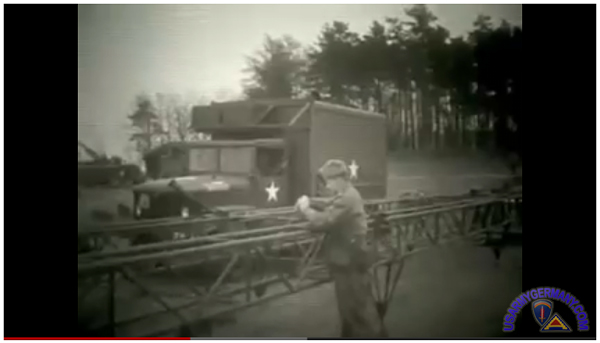
Battery A, 217th FAM Battalion, 40th Arty Group, on Kuhberg Hill, March 10, 1959 (Jim Ryan) |
|||||||||||||||||||||||||||||||||||||||||||||||||||||||||||||||||||||||
| Sep 1957 - Sept 1962 | |||||||||||||||||||||||||||||||||||||||||||||||||||||||||||||||||||||||
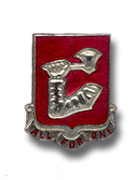 40th Artillery Group DUI
40th Artillery Group DUI |
|||||||||||||||||||||||||||||||||||||||||||||||||||||||||||||||||||||||
| (Source: AN&AFJ,
7 Sep 1957) Col Gildart Leads First 'Redstone' Unit. The Army's first operational heavy ballistic missile unit, with the Redstone Missile as its organic weapon, will be activated this month at Redstone Arsenal, Huntsville, Ala. The units will be designated the 40th Field Artillery Missile Group (Heavy). Unit strength: 650 officers and men. (The 40th Arty Gp (REDSTONE) deployed as the first of two REDSTONE groups to Germany in June 1958.) |
|||||||||||||||||||||||||||||||||||||||||||||||||||||||||||||||||||||||
| What's New - April 19, 2006 Jim Ryan has just posted a series of photos that depict the Redstone Trainer Missile operation conducted by Battery A, 217th Field Artillery Missile Battalion in February 1959 on Kuhberg Hill. Pics are on his Page 8, Photo Gallery. |
|||||||||||||||||||||||||||||||||||||||||||||||||||||||||||||||||||||||
| The 40th Artillery Group was the first Redstone Group deployed to West Germany, in June 1958. I served in the 40th Artillery from August 1960 to January 1962. Specifically: Battery "A", 1st Missile Battalion, 333rd Artillery, 40th Artillery Group (Redstone). 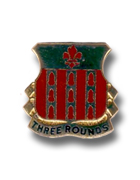 333rd Artillery Regiment DUI 333rd Artillery Regiment DUIBattery "A" was located at Des Gouttes Kaserne, Bad Kreuznach, along with the 580th Engineering Company, which produced LOX for the Group's Redstones. 40th Artillery Headquarters, Firing Battery "B", and the Group Ordnance Company (630th) were located in Wackernheim, approximately 15 -20 km northeast from us, close to Mainz. I remember the deployment of the 46th Artillery Group to Germany from Fort Sill in the Spring of 1959, as I was attending 26 weeks of schooling for the Redstone guidance system at the time at Fort Sill. I subsequently served for a year at the Redstone School at Fort Sill, until reassigned to 40th Artillery in the summer of 1960. While serving at the Redstone school we travelled to White Sands, NM in April 1960 to witness the live firing exercise by Battery "A" of the 46th Artillery Group. From my browsing of the Redstone Arsenal Historical Website, I see that the 40th Artillery was deactivated later in 1962, probably as a consequence of the deployment to Germany of the first Pershing Missile units. The black and white photo was taken in the autumn of 1960 (can't remember the exact date). It was taken at Des Gouttes Kaserne, Bad Kreuznach, immediately after we conducted a training firing exercise. The building to the rear of the Redstone is the Schneider Optics factory. The people posing in front of the Redstone are most of the members of the Firing Battery: Battery "A", 1st Missile Battalion, 333rd Artillery, 40th Artillery Group (Redstone). The color photos were taken in August 1961. I shot a whole sequence of 35mm Kodak slides of a firing mission training exercise, "soup to nuts". These photos were taken on Kuhberg Hill, an area a few miles south of Bad Kreuznach that the Army used for various purposes at that time. For example, we would conduct missile oprations training; the 580th Engineer Company of 40th Artillery generated liquid oxygen (LOX) for the missiles at this site, using their mobile large trailer LOX generating plants; and, the local Army Hospital would sometimes have a field hospital set up for their training. Whenever we did a missile simulation launch exercise, the local population would show up in goodly numbers to watch the action. In January 1962, 40th Artillery Group strength was on the order of 600 + men (probably under strength at the time) among its five component parts. It was then commanded by Colonel Royal E. McShea, who had previously commanded the United States Army Artillery & Missile School at Fort Sill. By way of explanation, the Redstone was transported to the launch area in three sections: the nose unit (warhead), aft unit (guidance compartment), and the thrust unit. The three sections were mated and the assembled missile was given a horizontal checkout. After the missile was raised to the vertical position by the lightweight "H" and "A" frame equipment, propellants were loaded, and fire mission presettings were inserted into the guidance system. The "H" frame was then rigged with a platform and raised to the vertical position for any last minute servicing of the equipment bays and the dry ice external cooling pack (Photo 7). (The external dry ice cooling pack is ejected at launch by ignitor squibs.) Photo 8 shows the missile being loaded with liquid oxygen. In summation, the firing exercise was a highly labor-intensive, time-consuming operation. So, it is no surprise that the Army wanted to deploy Pershing ASAP. Redstone operational units were only deployed in Europe for about five or six years (June 1958 to mid 1964?). So, in retrospect, I consider myself lucky that for eighteen months I was part of a pretty unique enterprise at the time. |
|||||||||||||||||||||||||||||||||||||||||||||||||||||||||||||||||||||||
| (Additional Comments submitted by Jim Ryan, Battery "A", 1st Msl Bn, 333rd Arty, August 1960 - January 1962) | |||||||||||||||||||||||||||||||||||||||||||||||||||||||||||||||||||||||
| This is in response to your question posed with the Redstone missile photo submitted by Jim Jenkins on the Field Artillery Overview Page, as to whether 40th Artillery Group deployed to Germany with 217th markings on its equipment. I will share with you what I remember being told 43 years ago when I first joined the Group in August 1960, by 40th Artillery Battery A "old timers" who had been with 40th for quite a while. According to those who had originally come over from Huntsville, Alabama, 40th Artillery Firing Batteries A and B did indeed arrive in Germany with the 217th Field Artillery designation they had carried at Redstone Arsenal. The arrival of 40th Artillery in Germany in June/July 1958, however, occurred at the same time that the Army was reorganizing Redstone Groups, and deciding to limit Redstone to 3 Groups rather than 4. It was in that June/July 1958 time frame that 46th Artillery Group and 209th Artillery Group were being established at Fort Sill, Oklahoma, and being redesignated. 46th Group's firing batteries became Battery A and Battery B, 2nd Missile Battalion, 333rd Artillery. For the 209th Group, it was 4th Missile Battalion, 333rd Artillery. So, apparently shortly after arriving in Germany, or early in 1959 coinciding with the deployment of 46th Artillery Group to Europe, the very first Redstone Group, 40th, had its 2 Firing Batteries designations changed over to Battery A and Battery B, 1st Missile Battalion, 333rd Artillery, for Army conformity. It would certainly be interesting and enlightening to confirm and hear more about this from some of those who initially deployed with Redstone. While we always experienced personnel turnovers - 18 month tours for the draftees and 24 month tours for the enlistees was the norm, during the first half of 1961 a number of the career people who came over in June 1958 rotated back to the US upon completing their 36 month overseas tour. During the first half of 1961, our Battery Commander Captain Pascal Pascarella, First Sergeant Clifton Amerson, Maintenance Officer CWO Robert Frost, and Firing Section chief SFC Starr Palmer, to name a few, all departed. They and their counterparts were the overseas Redstone pioneers. There was similar turnover at that time throughout the Group, top to bottom. Colonel Royal McShea arrived from Fort Sill to take over as new Group commander during that period. It would also be interesting to hear from the second wave of important 40th Artillery pioneers. These were primarily the NCO's joined 40th Artillery in 1959 and were the first to be trained at the USAAMS, Fort Sill rather than Redstone Arsenal. Knowing most of these people certainly made things easier for me when I joined the group in 1960. You might note on a map of Germany that Eckweiler is less than 20 miles west of Bad Kreuznach. During my time with 40th Arty, we usually ranged no more than 30 miles from BK when we went out on extended field duty. The site in Jim's photo has an eery feel about it. I wouldn't be surprised at all if I were there also at that very same site. The photo certainly has the look of December in Germany about it. In fact, it has the look of a German quarry (note the dug out cliff in the left of the photo). I know that quarries were among our favorite sites for launch operations. Something about being down in a bowl, hidden from prying eyes. Some of these quarries were active, so we would arrive after the German workers had left for the day. The night launch operations were quite challenging, where you had to perform in near blackout conditions. We would usually pull into a site around dusk, and the goal was to have the missile ready for launch in no more than 5 hours - less if possible, but that was really pushing it. It seems we were always being put in a contest against B Battery to achieve the shortest time. We would "launch", then tear down, pack up, and then drive back to our field encampment before dawn. We had to be out of the quarry before the Germans started arriving for work in the morning. Most times we made it with time to spare. Sometimes we didn't - on those occasions there would be some very surprised civilians showing up for work. The other interesting thing about Jim's photo, if taken in December 1958, is that the lightweight missile erector equipment is already being used, and the assembled missile is being raised off the warhead unit semitrailer by the "H" and "A" frame erector-servicer rigging. I was always under the impression that 40th initially deployed to Europe still using the heavy duty crane to erect the missile, and that it took some time to receive and employ the newer equipment. The "10 wheeler" in the photo with 217th markings is the 5-ton tractor truck used to tow the warhead unit semitrailer. If you refer to the photo on the 40th Arty page that I previously sent you showing the "H" frame and service Platform, you can see updated markings on the bumper of the erector-servicer 2 & 1/2 ton vehicle: 7A-40GP-F I've also attached a few more Redstone operations photos (Photos #12-15), with Battery A personnel, that you might like to include in either your 40th Arty page, or the Redstone section of your Field Artillery Overview page. All photos taken at Kuhberg Hill, outside of Bad Kreuznach, Germany in August 1961. |
|||||||||||||||||||||||||||||||||||||||||||||||||||||||||||||||||||||||
|
|||||||||||||||||||||||||||||||||||||||||||||||||||||||||||||||||||||||
|
Lineage
of the 40th Artillery Regiment
Constituted 5 July 1918 in the National Army as the 40th Field Artillery and assigned to the 14th Division Organized 10 August 1918 at Camp Custer, Michigan. Demobilized 6 February 1919 at Camp Custer, Michigan. Reconstituted 1 October 1933 in the Regular Army as the 40th Field Artillery. Activated 4 June 1941 at Camp Roberts, California Regiment broken up 1 March 1943 and its elements reorganized and redesignated as follows: Headquarters and Headquarters Battery as Headquarters and Headquarters Battery, 40th Field Artillery Group 1st and 2d Battalions as the 974th and 975th Field Artillery Battalions, respectively After 1 March 1943, the above units underwent changes as follows: Headquarters and Headquarters Battery, 40th Field Artillery Group, inactivated 15 March 1946 in Germany Activated 26 April 1951 at Camp Carson, Colorado Redesignated 9 September 1957 as Headquarters and Headquarters Battery, 40th Field Artillery Missile Group Redesignated 20 July 1958 as Headquarters and Headquarters Battery, 40th Artillery Group Inactivated 16 September 1962 in Germany 974th Field Artillery Battalion inactivated 10 January 1946 at Camp Patrick Henry, Virginia Redesignated 5 February 1947 as the 509th Field Artillery Battalion Redesignated 25 June 1948 as the 509th Armored Field Artillery Battalion and assigned to the 3d Armored Division Activated 30 July 1948 at Fort Knox, Kentucky Inactivated 1 October 1957 in Germany and relieved from assignment to the 3d Armored Division 975th Field Artillery Battalion inactivated 13 February 1946 at Camp Kilmer, New Jersey Redesignated 5 February 1947 as the 510th Field Artillery Battalion Activated 1 February 1949 in Austria Redesignated 20 August 1956 as the 510th Field Artillery Rocket Battalion Inactivated 1 June 1958 in Italy Headquarters and Headquarters Battery, 40th Artillery Group; 509th Armored Field Artillery Battalion; and the 510th Field Artillery Rocket Battalion consolidated, reorganized, and redesignated 16 September 1962 as the 40th Artillery, a parent regiment under the Combat Arms Regimental System Redesignated 1 September 1971 as the 40th Field Artillery Withdrawn 16 September 1987 from the Combat Arms Regimental System and reorganized under the United States Army Regimental System with Headquarters in Germany Transferred 15 January 1996 to the United States Army Training and Doctrine Command |
|||||||||||||||||||||||||||||||||||||||||||||||||||||||||||||||||||||||
|
|
|||||||||||||||||||||||||||||||||||||||||||||||||||||||||||||||||||||||
| (Source: History of the Redstone Missile System, Historical Division, US Army Missile Command, October 1965) | |||||||||||||||||||||||||||||||||||||||||||||||||||||||||||||||||||||||
|
The 209th
and 46th FAM Groups |
|||||||||||||||||||||||||||||||||||||||||||||||||||||||||||||||||||||||
|
|
|||||||||||||||||||||||||||||||||||||||||||||||||||||||||||||||||||||||
| (Source: STATION LIST, 16 April 1962) | |||||||||||||||||||||||||||||||||||||||||||||||||||||||||||||||||||||||
|
|||||||||||||||||||||||||||||||||||||||||||||||||||||||||||||||||||||||
| 1st MSL Battalion, 333rd Artillery | |||||||||||||||||||||||||||||||||||||||||||||||||||||||||||||||||||||||
| UNIT ROSTERS | |||||||||||||||||||||||||||||||||||||||||||||||||||||||||||||||||||||||
| (Submitted by Jim Ryan) | |||||||||||||||||||||||||||||||||||||||||||||||||||||||||||||||||||||||
|
|||||||||||||||||||||||||||||||||||||||||||||||||||||||||||||||||||||||
| (Submitted by Jim Ryan) | |||||||||||||||||||||||||||||||||||||||||||||||||||||||||||||||||||||||
| NOTE: I have converted Jim's DOC files to a rich text format to allow you to open the files in most desktop publishing programs. Eventually I will convert the files to PDF, today's standard. | |||||||||||||||||||||||||||||||||||||||||||||||||||||||||||||||||||||||
| "A" Battery, 1st Msl Bn, 333rd Arty, 40th ARTILLERY GROUP, Bad Kreuznach, Germany December 1960 | |||||||||||||||||||||||||||||||||||||||||||||||||||||||||||||||||||||||
| "A" Battery, 1st Msl Bn, 333rd Arty, 40th ARTILLERY GROUP, Bad Kreuznach, Germany December 1961 | |||||||||||||||||||||||||||||||||||||||||||||||||||||||||||||||||||||||
| (Source: Email from Jim Ryan, Battery "A", 1st Msl Bn, 333rd Arty, August 1960 - January 1962) |
|||||||||||||||||||||||||||||||||||||||||||||||||||||||||||||||||||||||
| (Source: US Army photo from author's collection) | |||||||||||||||||||||||||||||||||||||||||||||||||||||||||||||||||||||||
|
|||||||||||||||||||||||||||||||||||||||||||||||||||||||||||||||||||||||
| (Source: Email from Glenn Pruder, Battery "B", 333rd Arty, 1958-60) | |||||||||||||||||||||||||||||||||||||||||||||||||||||||||||||||||||||||
| I was in B Battery of the 333rd Artillery from 3/22/58 until 9/28/60. I was the one that operated the vehile to raise the missile onto the launch pad. We began with a 20-ton crane in Huntsville but switched to the light weight equipment when we went to Germany. We were at Bad Kreuznach for awhile before moving to Wackernheim. Was a great experience. | |||||||||||||||||||||||||||||||||||||||||||||||||||||||||||||||||||||||
| (Source: John Jardine via Jim Ryan) | |||||||||||||||||||||||||||||||||||||||||||||||||||||||||||||||||||||||
|
I was in A Battery from 25 April 1959 until 19 October 1960. Although I certainly don't remember as much as Jim Ryan does, I do know when the 217th became the 333rd. That's only because I'm looking at Special Orders #30 dated 30 April 1960. SO 30 transferred all personnel from the 217th to the 333rd as of 1 May 1960.
I enjoyed my time in BK and met a lot of great guys in A Bty. I think of those days often. The two memories that stand out are of course going to White Sands to fire the missile which was in March 1960. The other was being a member of the group that went to the Paris Air Show with the training missile in June 1959. I was one of the three newest men in A Bty so it was quite a surprise to be picked. Naturally it was a great time and one I look back on fondly. We were there for 15 days.I would be interested in getting in contact with Jim Ryan, Ron Smith, or anybody else who served with me.
The first three photos shown below were taken at the Paris Air Show in June 1959. Battery A of 40th Artillery Group was chosen to display the Redstone trainer missile at the Air Show that year. Sixteen men made the trip: 15 from Battery A and an SFC from the 630th Ordnance Company. They were in Paris for 15 days. They set up the trainer missile for display, and once the show started they worked two days on, six hours a day, and the third day off. There were two six hour shifts a day. They were paid $16.00 a day per diem. Their hotel room rate was $6.00 per night, with two men assigned to a room each paying $3.00. Sincerely, John G. Jardine |
|||||||||||||||||||||||||||||||||||||||||||||||||||||||||||||||||||||||
| (Source: Email from Robert (Bob ) Nicol, Battery "B", 1st Msl Bn, 333rd Arty, 1959-61) | |||||||||||||||||||||||||||||||||||||||||||||||||||||||||||||||||||||||
| 46th Artillery??? I was part of the 40th Artillery Group (Heavy), B Battery, 333rd Field Artillery, Firing Section stationed in Wackernheim (by Finthen Field). B Battery was in McCully Barracks (I was there 1959 - 1961). A Battery was in K-town (Kaiserslautern) about 50 klicks away. Headquarters and Headquarters (with the old man, a full bird colonel) was in Wackernheim also and the Engineer Company was in K-town. We did give shows out at nearby Finthen airfield and other places that I do not recall. We (B Battery) went back and fired the first Block II Redstone on January 20, 1960. The White Sands newspaper said "NATO Troops fire Redstone" a real thrill.... As I was leaving in early 1961 they were talking about converting to the Pershing. I was two years in Wackernheim in the Firing Section of B Battery (Spec 4), about 35 men. We took our trainer all over Germany and set it up in the Black Forest and beyond. The farmers were always shocked when they came out in the morning and saw us in final firing mode about 5:00 a.m. in a field or large intersection between the trees. We were a tough and rowdy crew and we worked very hard with the missile. We could set it up in our sleep. On average we set it up about once per week in the two years that I was there, and we always were inspected to death by the top brass that I felt were afraid it would never leave the ground. We were very confident that it would as we proved at White Sands.... The "Classmates" folks have a very limited military number of sign ups, but they do have about half a dozen listed for McCully Barracks and Wackernheim (but nothing in my time period). I seem to remember that there were four firing units, in that we had profficiency tests and our B Battery scored the highest, and that is why we were selected to fire the first Bock II Redstone. In "B" battery we had a very infamous Service Section (that put together the light weight erection "A" frame and "H" frame equipment and put the missile together) called the "Animals" and Firing Section was just called the "Brains". The Animals were always picking fights with the Airborne guys stationed in Gonsenheim about 6 klicks south. We went on alerts (drive out to the woods and hide) about once per month and once we stayed in the woods for over a month, and I must say we got very "ripe" after about ten days. I would welcome any emails from fellow members. Robert (Bob ) Nicol |
|||||||||||||||||||||||||||||||||||||||||||||||||||||||||||||||||||||||
| (Source: Email from Ron Smith, Battery "A", 1st Msl Bn, 333rd Arty, Dec 1959 - June 1961) | |||||||||||||||||||||||||||||||||||||||||||||||||||||||||||||||||||||||
| I took basic training at Fort Ord near Monterey, CA, finishing in early September 1959. Since our orders hadn't arrived, Larry Satterfield and I had to stay at Ft. Ord for a few days after the rest had left. When our orders finally came we only got a few days leave before reporting to Ft Sill. Larry and I, along with John Samples and 20 other men went through "Redstone 3", the third 8-week Redstone class held at Ft. Sill. Classes started around the middle of September, and finished around the middle of November. Those of us going to Germany were given a few days leave before being sent by ship to Germany. Four of us were then sent by train to Bad Kreuznach, one of us to Wackernheim, arriving at our units in December 1959. Battery A was flown back to the States to fire a missile at White Sands in March of 1960. We were told the missile went 80 miles downrange and hit within 50 feet of target, which was a record for accuracy at that time. The four black & white photos on this page from White Sands were taken by an Army photographer while Battery A was doing its annual firing in March 1960. The negatives were sent to our CO after we returned to Germany and I was asked to make prints of these. I made several copies, and was allowed to keep one set for myself. I operated the Erector/Servicer truck for Battery A from early January 1960 until autumn of that year when our Battery Clerk finished his tour and was sent back to the States. I was then moved into the orderly room as Battery Clerk, a job I held until I finished my tour in June 1961. When Battery A did practice "firings" I would drive the Erector/Servicer truck pulling the mobile launcher which had a removable axle with two wheels and a tongue assembly so it could be pulled as a trailer. I would drive into the area and head for the survey marker. Sgt. Stanley Willis would be standing on the marker and I would head directly toward him. As I approached, he would step back, and I would steer so that the center of the truck would pass directly over the survey marker. Sgt. Willis would signal me to stop when the center of the launching ring was over the marker. Then members of the Servicing Section would disconnect the launcher from the truck and remove the axle and roll it away. At the same time, other crewmembers would start the leveling process by cranking on four cranks with pads that held the launcher off the ground. While this was going on, other crewmembers would remove the boom pieces from the truck and fit them together attaching one end to the mobile launcher assembly, and the other end to the back of the Erector/Servicer truck. Then, as I ran the winch which was just behind the cab of the truck, crewmembers would pull the steel cable out and connect it to the A-frame. The A-frame was used to lift the rear section of the missile from the trailor it was transported on in order to attach the ring to the rear of the missile and then pin it to the platform. When the ring was pinned to the platform, two cables would then be connected from near the front of the rear section of the missile to the A-frame, to allow that section to be lifted from the trailor. Then the other sections of the missile would be moved into place and connected to the rear section. Horizontal check-out would be made, and then using the winch and A-frame, the missile was lifted into a vertical position, so that fuel could be loaded and instructions loaded into the on-board computer. A vertical check-out would be made and the missile would be ready to "fire". I would like to hear from any others who served in Redstone units. Ronald Smith |
|||||||||||||||||||||||||||||||||||||||||||||||||||||||||||||||||||||||
| (Source: Information provided by Ron Weber via Jim Ryan) | |||||||||||||||||||||||||||||||||||||||||||||||||||||||||||||||||||||||
| A and B Batteries of 1st Bn, 333rd Arty started to shut down in late February 1964. The units turned in all their tools, equipment, vehicles, missiles and warheads. The motor pool and grounds at McCully Barracks looked bare. The unit's colors were cased probably sometime end of May or the early part of June 1964. Ron was transferred to 4th Bn, 41st Arty (Pershing) at Schwäbisch Gmünd on 12 or 14 June. Most of the members of the REDSTONE unit were transferred to one of the Pershing battalions (56th FA Group). |
|||||||||||||||||||||||||||||||||||||||||||||||||||||||||||||||||||||||
| 580th Engineer Company (Redstone) | |||||||||||||||||||||||||||||||||||||||||||||||||||||||||||||||||||||||
| (Source: Email from Desmond Bonnington, 40th FA Gp, 1957-58) | |||||||||||||||||||||||||||||||||||||||||||||||||||||||||||||||||||||||
| I am a retired solid rocket motor
engineer and program manager at Aerojet Sacramento. Oct 1957 -- Reassigned from instructor, the US Army Engineer School, Ft Belvoir to the 580th Eng Co. Redstone. MOS Electric Motor & Generator Repair. Reported in at Huntsville on 4 Oct. Sputnick Day. No joy in Huntsville that day. April 1958 -- TDY to White Sands with B Battery launch crew and selected technicians from the 580th and 630th Ord. June 1958 -- Following successful all troop launch and two weeks leave, B Bat. launch team reports to McGuire AFB for air transport to Rhein-Main, Germany. On arrival, night train Frankfurt to Paris. Charter bus Paris to San Nazaire to rejoin the group for the big motor march through France to station in Bad Kreuznach and Wachernheim, Germany. April 1959 -- Crisis over Berlin developing. 40th Group goes to the field to the end of May. This time we have the real missiles. Previously all field exercises had been done with the FART ( Field Artillery Redstone Trainer. later renamed FUPA, Firing Unit Proficiency Analyzer.) A visit to on of the battery's firing sights found a real missile checked out in the horizontal ready for erection, fueling and launch. At group Hq. there were some new Civilian looking guys in Army coveralls with film rad. badges. It was obvious that this tine we were loaded for bear. Fortunately, the Ruskis backed down and we didn't have to shoot. Sept 1959 -- Selected as 40th Group Soldier of The Year. $50 and a three day pass! 14 Dec 1959 -- Port Call at Bremerhaven -- going home. 31 Dec 1959 -- Oakland Army Terminal,CA -- Release from active duty -- Happy New Year! 1960 - 1998 -- Design Engineer, Project Engineer and Program Manager at Aerojet on Minuteman, Polaris and MX eacekeeper solid rocket motors. In 1994- 1997 I also managed the Sandia National Labs/US Army SSDC STARS program (Refurb of Polaris A3 FBM's for use as target vehicles.) MY assigned Quality Assurance Engineer turned out to have soldiered with A Bat. 46th Arty. in Neckarsulm. On closing out the program and sending selected tooling and documentation to Redstone Arsenal I worked with several old timers who worked on the Redstone program when the 40th was in training. During my years at Aerojet I got to know the late Dr. Rudi Beichel who had been with Von Braun at Peenemunde and worked on the development of Redstone before coming to Sacramento. He would often stop in my office to chat about the old days and field operations of the V2 and Redstone. Oct 2000 -- When visiting Huntsville on vacation I had a chance meeting with a retired Col. and General both of whom had been Ord.Lts at the arsenal in 1957 and had worked on the org. and training of the 40th. Feb 2002 -- Reno NV-While swapping war stories with a fellow traveler it turned out he had been a security documents clerk in the 630th and went over with us on the deployment. His son, our tour leader, had been born in Germany when his parents were stationed at Wackernheim. Conclusion -- I consider my Army service with the 40th Group to be memorable and to have had a serendipitous effect on my career in rocket propulsion. |
|||||||||||||||||||||||||||||||||||||||||||||||||||||||||||||||||||||||
| (Source: Email from Thomas J. Rizzo, 580th Engr Co, 1957-59) | |||||||||||||||||||||||||||||||||||||||||||||||||||||||||||||||||||||||
On December 28, 1956, I joined the army and took a 15 day leave before entering the service; as I was told, if I joined in December I would be released before Christmas in 1959. I was inducted into the army on January 12, 1957 at Ft. Dix, New Jersey. At that time I was sent to Ft. Benning, Georgia for basic training with the 64th Tank Battalion. After basic was completed, I was sent to Ft. Belvoir, Virginia for advanced basic training and on to liquid oxygen school. There I was taught how to make liquid oxygen from the air. The school lasted for 10 weeks. I was taught how to run a liquid oxygen plant that produced one ton a day of liquid oxygen. Upon completion of the school, I was assigned to the 580th Engineer Company, which was just being organized. The 580th Engineer Co. was then assigned to the 40th Missile Group. Captain Clayton was the 1st company commander. We were sent to the Redstone Arsenal in Huntsville, Alabama. When we arrived there they equipped us with 5 Ton liquid oxygen plants which no one knew how to operate. A new training process began on how to operate this plant. After being tested with a 14-day field trip, the Army finally decided we were ready to be deployed to Bad Kreuznach, Germany. We took a 14-day military cruise to Saint Nazaire, France with all of our equipment and then convoyed across France to Germany. The convoy took about 5 days and we stayed at military installations along the way. Because our heavy equipment was mobile the city fathers of Bad Kreuznach came to the military commanders to ask for help in building a soccer field for the town. Part of our heavy equipment was a bulldozer. We were given the task of helping them. In the process of grading the soccer field we accidently dug up an unexploded 5-Ton Blockbuster bomb which had been dropped during World War II. The bomb squad from Frankfurt had to be called in to disarm the bomb. The reason that I knew about the bomb was I was driving the fuel truck for the bulldozer. I was on the scene when the bomb was exposed. In November of 1959 I rotated back to Ft. Dix for discharge. Like Mr. Harbin, I also knew Sgt. Bonds and Sgt. Gravely. In the early 1970’s, I was in the insurance business and had the opportunity to go back to Germany and live for four years as a civilian salesperson in Bad Kreuznach, selling insurance to the military. At that time there was no 40th Missile Group left on base and the town had changed considerably. |
|||||||||||||||||||||||||||||||||||||||||||||||||||||||||||||||||||||||
| ADDITIONAL INFORMATION I found pictures taken of the liquid oxygen plant which the 580th Engineer Company operated. I have included a brief description of each of the pictures. |
|||||||||||||||||||||||||||||||||||||||||||||||||||||||||||||||||||||||
|
|||||||||||||||||||||||||||||||||||||||||||||||||||||||||||||||||||||||
| (Source: Email from Buddy G. Harbin, 580th Engr Co, 1958-60) | |||||||||||||||||||||||||||||||||||||||||||||||||||||||||||||||||||||||
| I was with the
580th Engineers from October 1958 to
October 1960. I left Bad Kreuznach on October 13th 1960. I came home
got married and one year later our house burned and I lost all the
pictures of Bad Kreuznach and my buddies and their address's, so the
pictures and information I found on this web site was very interesting.
I arrived in Frankfurt in October of 1958 and was put on a train to Bad Kreuznach. I was picked up at the train station by two soldiers, their names were Reid and Timmons. They took me to Des Gouttes Kaserne and the next day I was assinged to the 580th as a tanker driver and I hauled Liquid Oxygen for the Redstone Missile for the next 2 years. The Liquid Oxgen was produced up on Kuhberg Hill. Every so often we would make runs to Wackernheim to top off the tankers that were stored between dirt silos. If I remember right there were Czech Guards (Labor Service?) on the gate to get into the storage area. There also was a big field next to the storage area where the 8th Infantry Division did their practice parachute jumps which was interesting to watch. My CO was Captian Yeager and my platoon Sgt. was Master Sgt. Bonds and also Sgt.Gravely was my squad leader. I haven't made it back over there, but plan on doing so when I retire. It was such a pretty town and country and I have a lot of memories. Thanks again for your web site. Buddy Harbin |
|||||||||||||||||||||||||||||||||||||||||||||||||||||||||||||||||||||||
| 630th Ordnance Company (Redstone) | |||||||||||||||||||||||||||||||||||||||||||||||||||||||||||||||||||||||
| (Source: Email from Robert Neff, 630th Ord Co, 1957-60) | |||||||||||||||||||||||||||||||||||||||||||||||||||||||||||||||||||||||
Reorganized in April 1954 as the 630th Ordnance Company, inactivated during June 1955 in Korea, and reactivated on 1 June 1957 at Redstone Arsenal, Huntsville, Alabama. The mission of the 630th Ord. Co. was to support the 40th Group by maintaining constant readiness of the missile system, specifically the propulsion section, guidance section, arming and firing section, and the warhead section. My understanding of the origins of Finthen airfield is that it was constructed by the Germans during WWII. It was constructed of PSP (pierced steel planking) over soil. When I arrived at McCully Barracks in 1958, the airfield did not have anything that even gave a hint of the PSP through which grass and shrubs grew and, there were no structures there at the time. The airfield was primarily used as a landing zone for the 8th Infantry Division - 504th, and 505th Abn. It was used occasionally for pomp and ceremonies, at which time CP (and mess) tents were pitched for dignitaries, and portable motor-generators were used for power. The ammunition bunkers were located several kilometers from the airfield in a fairly dense forested area. They too were constructed by the Germans at about the same time as the airfield. The bunkers were constructed of about one-meter thick, reinforced concrete, were at ground level, about the width of a three-car garage, and about 12 meters deep. The bunkers were covered in about 2 meters of dirt and gave the simple appearance of very large mounds of soil. Owing to the rather dense forest environment, from the air, they were rather inconspicuous, and even on the ground, unless you were facing the front of a bunker containing the large steel double doors, they were not very obvious to an unsuspecting observer. These bunkers were the secluded domain of the special weapons section. Only one time were the nuclear warheads removed from the bunkers and transported to a launch site; this was during the Berlin missile crisis. Those were rather nerve-wracking times! We were all loaded for "bear" (the Russian bear, that is); were issued "war reserve" weapons, and were awaiting the signal to launch. |
|||||||||||||||||||||||||||||||||||||||||||||||||||||||||||||||||||||||
|
|
|||||||||||||||||||||||||||||||||||||||||||||||||||||||||||||||||||||||
| Related Links: Redstone Missile System - System chronology of the Army's "workhorse" during the developmental years. Redstone Historical Monograph - very interesting history of the Redstone system (in PDF format) prepared by the Historical Division of the US Army Missile Command. (Note: the file is 7 MB in size!) My Army Redstone Days, October 1958-February 1962 - Jim Ryan's wonderful personal web site with many photos. |
|||||||||||||||||||||||||||||||||||||||||||||||||||||||||||||||||||||||
